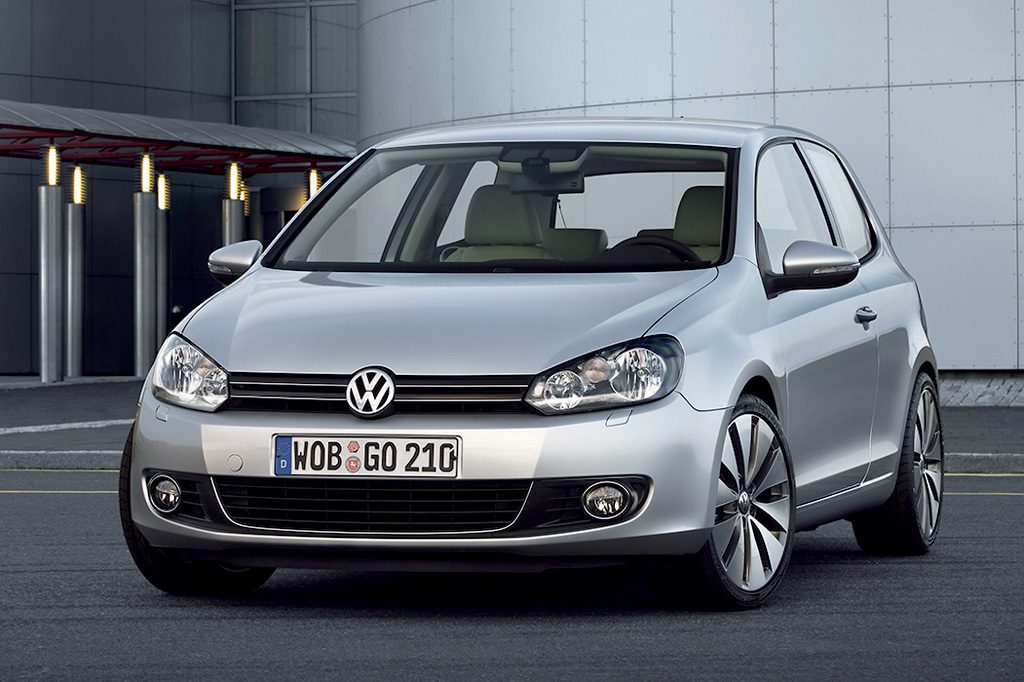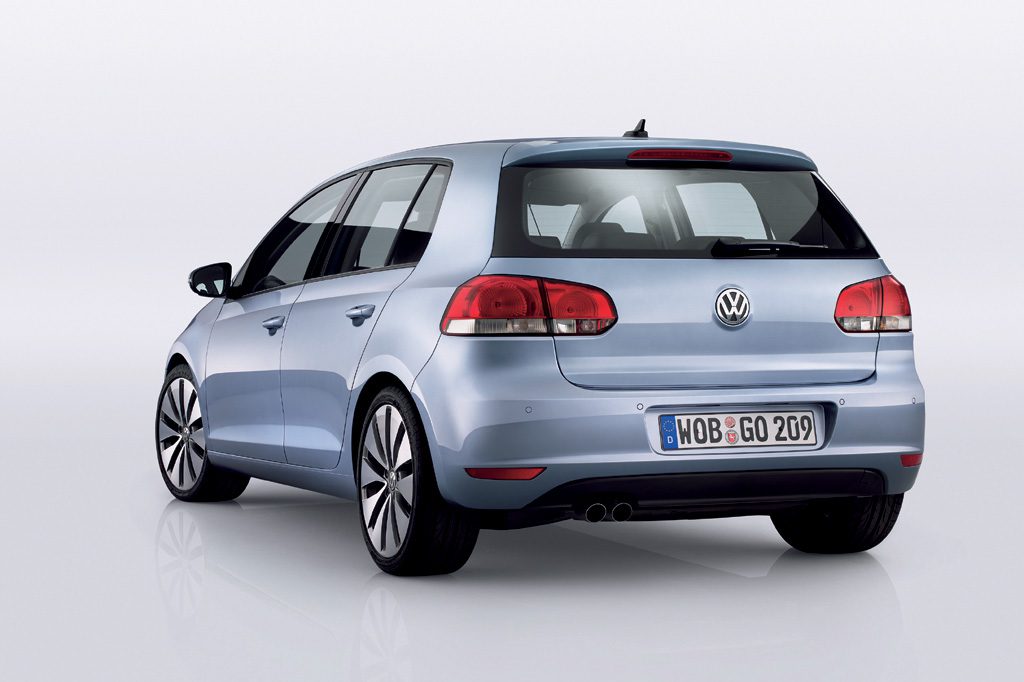| Compact car; Built in Germany |
|
|
| Good condition price range: $6,100 – $29,300* |

2010 Volkswagen Golf front

2010 Volkswagen Golf rear

2010 Volkswagen Golf interior
| Pros: |
|
| Cons: |
|
Jetta’s hatchback sibling–the Golf–injects a fun-to-drive, refined, and fairly roomy dose of sportiness into the compact-car class. The TDI’s spunky diesel engine, along with a sport suspension, raises the fun factor but also keeps things frugal with its stellar fuel-economy figures. Watch out for your bottom line, however. Even secondhand, the TDI’s price premium over gasoline-powered 2.5 models would take a while to recoup.
Overview
For 2010, the Volkswagen Golf replaced the Rabbit as this German automaker’s compact hatchback. Like the Rabbit, Golf came in two- and four-door body styles. Each was offered in 2.5 and diesel-powered TDI trim levels. A 170-horsepower 2.5-liter five-cylinder engine was standard on 2.5 models. TDI versions had a 140-horsepower 2.0-liter turbodiesel four-cylinder engine. A five-speed manual transmission was standard on the 2.5 two-door. Optional on that model and standard on the four-door 2.5 was a six-speed automatic. TDI versions came with a sport suspension and had either a six-speed manual or six-speed dual-clutch automated manual that behaves much like an automatic. Standard safety features included all-disc antilock braking, traction control, an antiskid system, curtain-side airbags, and front-side airbags. Four-door models could add rear-side airbags as an option. A tilt and telescopic steering wheel was standard. A sunroof, heated front seats, and a wireless cell-phone link were optional on all models. An uplevel audio system, xenon headlights, and a navigation system were TDI-exclusive options. Golf competitors included the Hyundai Elantra Touring, Mazda 3, Nissan Versa and Cube, Scion xB, and Chevrolet HHR.
Yearly Updates
| 2011 Golf The Golf was largely unchanged following its introduction for the 2010 model year. |
| 2012 Golf The biggest change for the 2012 Volkswagen Golf lineup was the addition of a sporty Golf R model, which had a turbocharged four-cylinder engine, six-speed manual transmission, and all-wheel drive. |
| 2013 Golf The 2013 Golf lineup received a few additional interior features, and the high-performance Golf R was unchanged for its second season. |
| 2014 Golf An all-new Golf was in the works for 2015, so perhaps it wasn’t too surprising that Volkswagen offered a dramatically simplified Golf lineup for 2014. The high-performance Golf R and all 2-door models were discontinued. The remaining 2.5 and TDI 4-doors were only available in two trim levels apiece. |
